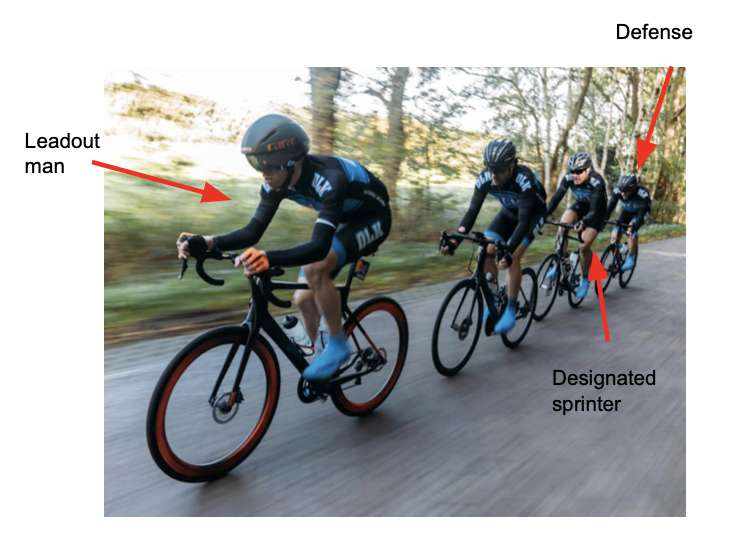
I love to ride my bike - on road, off road, on a velodrome, where ever. I’ve also dabbled with racing bikes over the past few years. In doing so, I’ve noticed some similarities between both the world of cycling and the world of startups.
Unlike the amateur races I do, major bike races like the Tour de France consist of multiple stages (days) of racing. Each stage is a separate race in and of itself, but the total time spent racing is measured throughout the event. The rider with the least amount of time spent racing wins the race.
If you've ever watched a bike race, and you saw a group of riders rotating around another another, what they're doing is "taking pulls" in order to reduce drag for the rider(s) in the back. At the highest levels of the sport, rider strength is essentially equal, so the best way to eek out a competitive advantage is by reducing wind resistance. Or by doping.
The further back in the paceline you are, the less wind resistance you experience, and the more efficient you ride. Pacelines allow teams to conserve energy over the course of each 5-6 hour stage. Towards the end of a race, these pacelines turn into leadout trains.
In this scenario, teams are no longer rotating riders. Instead everyone gets into a pre-agreed upon formation designed to get a designated race winner into a position where they can sprint across the finish line. The people in the front of the leadout train (the leadout men - and increasingly women in the Femmes division) begin an all-out sprint. When they've “burned all their matches” and can no longer accelerate, they peel off and fall back into the rest of the peloton. Sometimes there can be several leadout men, each peeling off when they've done their job of getting the designated sprinter into position for the final sprint.

Working in a startup is like racing in the Tour de France. There are multiple stages, each with their own strategies for winning, each with their own designated sprinters/leadout men/etc, and all culminating in one big finale.
For those of us who work in startups, we're all leadout men or at the front of the paceline at one point or another, and sometimes we're the designated sprinter. Importantly, no one is all of these things at all times. If all goes well, there aren't just 21 stages. The race may continue for decades or more.
Each of us has a set of matches to burn, not just in a race, but in our careers. Each time we take a pull or go for a sprint, we use some matches up. As we think about the race we want to race each stage, and the role we want to play in the overall race, deciding when to use a match and when to pull off is super important for us to achieve our goals.
Whenever it’s been time for me to pull off, I’ve revisited my The 6 T’s Framework for Evaluating Startups to help me decide what race to race next. If you’re at a similar crossroads, I hope you can use it too.